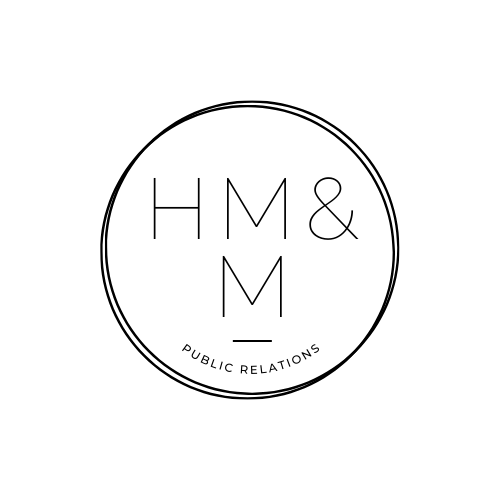By Mary Nguyen
It pays to keep tabs on where the latest developments are headed to help your business stay well-positioned to weather future changes. Here are three trends to know about for 2021 and beyond.
PR practitioners are chasing an increasingly elusive audience whose way of sharing information, engaging with news and forming opinions is continuously shifting in a communications landscape that is driven by constant technological advancements.
As audiences continue to move away from traditional media outlets towards social media, there have been opportunities for brands to take greater control of their brand narratives than ever before. In addition to this, the power of influencers to drive purchasing decisions and set trends in their respective spheres from fashion to fitness and hospitality reinforces that media fragmentation is here to stay.
The swing towards social media has not gone unchallenged however as governments and other interest groups around the world push for greater legislation to combat the monopoly tech companies have on information dissemination. Brands must be on top of developments in this space as questions arise around where content creators’ responsibility ends and platforms’ begins affects brand strategies and messaging.
On the technology side there’s been further development of artificial intelligence (AI), which once established will aim towards automating PR functions such as media monitoring and trend monitoring.
Pressure on social media to increase regulation of content
Once the sole right of publishing houses, TV stations and newspapers around the world, publishing is now open to any individual via digital platforms. Unlike traditional media, which is bound by a complex web of industry standards and government regulation, digital media is still relatively unchecked.
As research has shown, news consumers, especially younger audiences are less able to distinguish fact from fiction on their social media feeds and are undiscerning of the differences between media sources. The devastating effect of misinformation on social trust has governments around the world scrambling to pressure tech companies which include Google and its parent Alphabet, Twitter, Facebook, and other digital giants to take greater steps to police content on their platforms.
While he was opposed to increasing self-regulation on Facebook, CEO Mark Zuckerberg said he supported greater regulation of social media and suggested it should be informed by existing rules set in place for telecoms and media companies.
Zuckerberg further elaborated that it wasn’t the responsibility of private companies like his to exercise control of what constituted as free speech and moving in that direction constituted a curb on individual expression.
Despite such arguments other companies are already moving towards increased enforcement of guidelines designed to prevent online misinformation, most recently Sky News Australia was banned from posting on YouTube for 7 days after breaching the company’s COVID-19 misinformation policy.
Businesses can expect in future that there will be greater enforcement of community standards from tech companies themselves if not from government and must ensure they stay well within company guidelines and policies in future or risk losing their platform as Sky News did despite having 1.8 million YouTube subscribers and a multi-year partnership worth millions.
Artificial Intelligence will be PR’s next greatest tool
An increasing number of companies in every industry will be adopting AI to help streamline repetitive processes and public relations is no exception.
PR firms are already looking for ways to use artificial intelligence to increase efficiencies and have enjoyed success in the areas of media monitoring of competitors and brand coverage as well as sifting through vast swathes of information in order to stay on top of the latest news and trends.
AI allows PR professionals to respond even more quickly to changes in the media environment as AI becomes more capable of pulling out relevant information, more specific words and phrases and comprehensively collating all media coverage at lightning-fast speeds.
Other uses include determining the best time of day for press releases based on target audience, as well as the best channels to use based on the level of engagement. Data captured by AI bots can also help determine the type of content and format that elicits the best response which ensures PR professionals are able to accurately target audiences in the most efficient way. AI enables campaigns to be monitored more closely by adding a layer of data and metrics.
Increased micro-fragmentation of audiences
According to research published in the European Journal of Communication, the concept of a “mass audience” is fast becoming a thing of the past. As the divide deepens between older, less tech savvy consumers and everyone else, better segmentation of audiences is needed to effectively target groups.
These groups are becoming smaller due to the trend towards fragmentation, with greater variations between how consumers access content, their particular identities, interests and lifestyles. In a myriad of contexts it becomes necessary to target according to niche interests over several different channels instead of just sticking to one platform.
This makes market segmentation a more sophisticated endeavour than before. Because there is no longer a captive audience confined to traditional media like TV slots and magazine advertising, consumers expect personalised treatment which reaches them in their preferred formats. As they are the ones who are now in control of the dynamic; they have shorter attention spans and expect instant engagement.
As well as taking greater measures to understand the habits of the target audience, the next most important step is to ensure that the content directed towards them is highly relevant. Content volume and SEO buzzwords are not enough to ensure high-quality engagement with the target audience. To really get your brand messages across, greater care must be taken to ensure that messages are authentic, have real value to the audience and is based on deep knowledge of the particular industry you are in.
Want to learn more?
Find out when to plan a media release, how to evaluate campaigns, or if working with an influencer is right for you on PR Insights.




